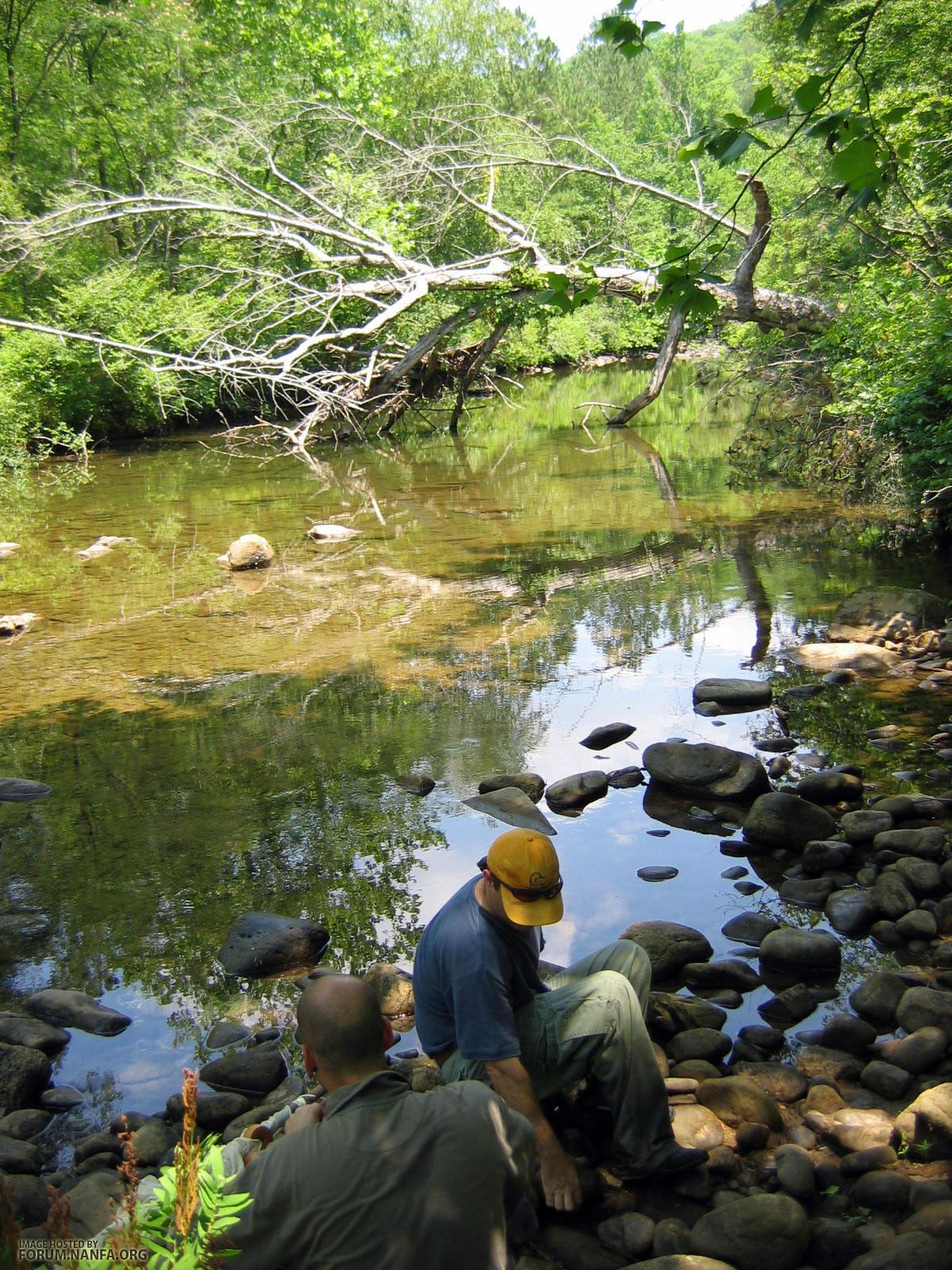The local state land steward, Nick Sharp, has been doing a low-intensity bioblitz to inventory the property. A state botanist was by earlier in the week, and as we arrived several groups of terrestrial ecologists/herpers were leaving. The hope was that this creek had hellbenders, but none were found over a 24 hour search of likely habitat. I showed up with two of my more adventurous students to check out the local fish. This property has one odd quirk; the only legal way in for most people would be by boat up lower Coon Creek from the Tennessee, since the property is an "island" with no legal right-of-way access. We got in with permission from a private landowner who has given Nick a gate key, and from there the road crosses TVA land that is more-or-less public. The road is only for ATVs or 4WD trucks; it was used as a timber road, and has gotten worse since. Luckily my truck made it in and out in one piece.
The primary site we sampled is a series of deep pools separated by riffles that shade in to small waterfalls. The challenge was the substrate: most of it is bowling-ball sized chunks of sandstone that are smoothed by the high water flow typical of the site, covered with one of the healthiest growths of brown diatoms I've seen. This makes the bottom extremely slippery with no flat surfaces. The water was extremely clear, to the point it was easy to step suddenly in neck-deep water without thinking because the bottom was so vivid from the clarity. Our seining method quickly became having two snorkelers chase fish into the net held by two people, with a fifth person to help pull up the net.
The fish fauna was limited but interesting. Because it drains Sand Mountain, really a steep sided plateau topped by ancient seafloor with low fish diversity in its creeks, I'd guess that Coon Creek's diversity is low because it drains a low diversity area. And like I said before, it's typically a high-gradient flow. Because of our intense drought locally the water was tame. But there was obvious evidence along the banks of heavier and more violent flow.
The fish we netted or observed:
Spotted bass
Redbreast sunfish
Bluegill sunfish
Spotted gar
Mottled sculpin
Logperch (but no blotchside...)
Rainbow darter
Black snubnose
Tennessee snubnose
Stoneroller
Whitetail shiner
Yellow bullhead
Northern hogsucker
The dominant fish were redbreast sunfish and large schools of spotted bass YOY. The deeper pools were loaded with logperch and whitetail shiner. The riffle areas had high populations of Tennessee snubnose, while the only black snubnose we found was in a small tributary spring run from Saltpetre Cave (along with the sculpins). It was odd netting in a creek without large numbers of smaller minnows such as scarlet shiners and striped shiners, but I'm sure they weren't present.
We didn't have time to sample some other areas of this creek, along with some other smaller creeks. I was hoping to find flame chubs, of course, but we didn't really find suitable habitat.
Here's a picture of our starting point. Notice the well-rounded stones.








